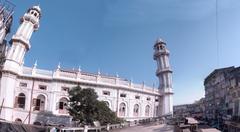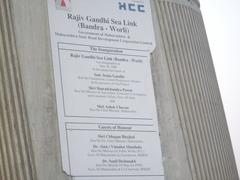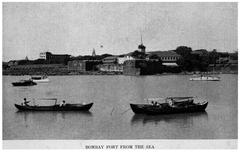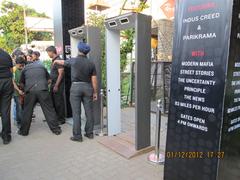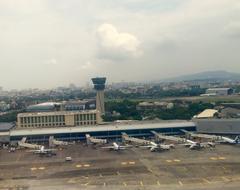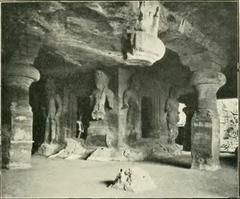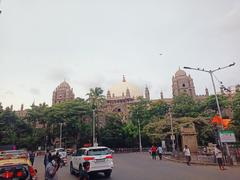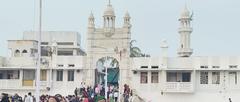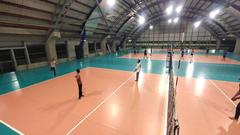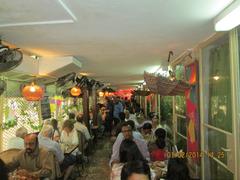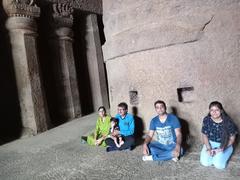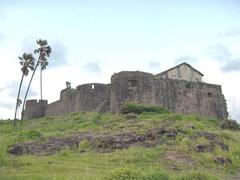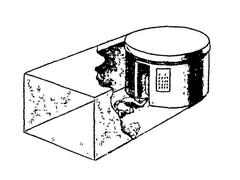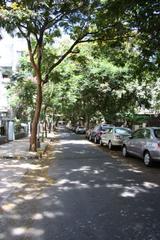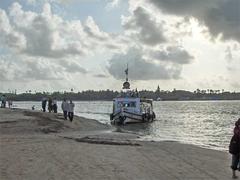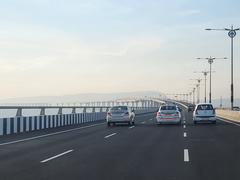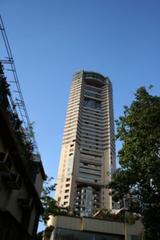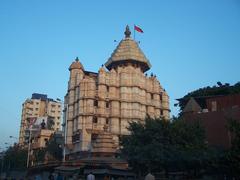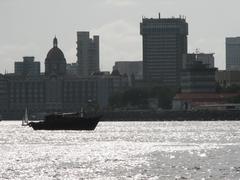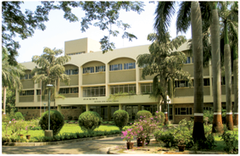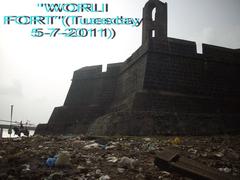
Jama Masjid Mumbai: Visiting Hours, Tickets, and Historical Significance
Date: 14/06/2025
Introduction
Jama Masjid Mumbai stands as one of the city’s most revered and historically significant Islamic landmarks. Nestled in the bustling Kalbadevi neighborhood, close to iconic areas like Crawford Market and Zaveri Bazaar, the mosque is a testament to Mumbai’s rich heritage and the resilience of its Muslim community. Not only does Jama Masjid serve as a vibrant center of worship, but it also acts as a hub for community gatherings, education, and cultural celebrations—especially during Ramadan and Eid.
What sets Jama Masjid apart is its unique architectural foundation atop an ancient water tank, a feature that symbolizes spiritual purity and continuity from its earliest days. The mosque’s Indo-Islamic and Mughal architectural elements—soaring minarets, intricate marble work, and capacious prayer halls—attract both worshippers and admirers of history and culture. Open to all who respect its sanctity, Jama Masjid Mumbai welcomes visitors to experience its spiritual ambiance and historical legacy.
For more detailed insights, see Wikipedia, The Islamic Heritage, and Holidify.
Table of Contents
- Historical Background
- Cultural Significance
- Visiting Information
- Nearby Attractions & Suggested Itinerary
- Special Events and Tours
- Visuals & Media
- Frequently Asked Questions (FAQ)
- Conclusion and Call to Action
- References
Historical Background
Origins and Early Development
The story of Jama Masjid Mumbai begins in the late 18th century. Originally, the site featured a large water tank owned by a Konkani Muslim merchant, who permitted the construction of a mosque provided the tank was preserved (Wikipedia). The first mosque was built on a platform above this tank, creatively integrating the water body into the mosque’s foundation—a rare architectural solution representing the importance of water for ritual ablution and community life.
This initial mosque, situated near Dongri, was destroyed in 1770 under British colonial orders, reflecting the era’s turbulent history (Travenix).
Reconstruction and Expansion
Following the original mosque’s destruction, the community faced several obstacles before completing the present Jama Masjid in 1802. This new mosque not only restored a place of worship for the Muslim population but also symbolized their resilience and unity in the face of colonial adversity (Holidify).
Throughout the 19th century, the mosque was expanded and enhanced to accommodate the growing congregation. In 1897, a management board was established, ensuring community representation and accountability (Wikipedia).
Architectural Evolution
Jama Masjid Mumbai is renowned for its Indo-Islamic architecture. The mosque is constructed on a rectangular platform elevated above the historic tank, supported by distinctive black stone arches added in 1874 (The Islamic Heritage). Two minarets, each about 40 meters high, rise above the mosque, and the prayer hall’s arches and marble chhatris (domed pavilions) are adorned with intricate stonework.
In 1814, a second story was added, and in subsequent years, windows, embankments, and a school building were constructed to enhance its functionality and beauty.
Cultural Significance
Religious and Social Role
As Mumbai’s principal Sunni Friday mosque, Jama Masjid plays a central role in religious life. It hosts large congregations during Friday prayers (Jumu’ah) and Islamic festivals such as Eid al-Fitr and Eid al-Adha, drawing thousands of worshippers (Holidify). The mosque also provides Quranic instruction, hosts community gatherings, and supports charitable activities.
Community Leadership and Identity
Managed by an elected board of directors from the Konkani Muslim community, Jama Masjid has always embodied participatory leadership (Wikipedia). Its continued prominence is a symbol of the Muslim community’s enduring presence and contributions to Mumbai’s cultural and economic life.
Urban Integration
Located in Kalbadevi, Jama Masjid is surrounded by Mumbai’s commercial districts, including Crawford Market and Zaveri Bazaar. This setting highlights the mosque’s integration with the city’s vibrant urban life and reflects Mumbai’s unique blend of tradition and modernity (Travenix).
Visiting Information
Visiting Hours
- General Hours: Daily from 6:00 AM to 9:00 PM.
- Recommended Times: Early mornings and late afternoons for a quieter visit; avoid Fridays and major prayer times for a less crowded experience.
Entry & Tickets
- Entry Fee: Free for all visitors, including non-Muslims.
- Donations: Welcome but not mandatory.
Guidelines and Accessibility
- Dress Code: Modest attire required. Men should wear long pants and sleeves; women should cover their heads, arms, and legs.
- Footwear: Remove shoes before entering the prayer hall.
- Photography: Allowed in most areas; avoid photographing worshippers and prayer sessions without permission.
- Accessibility: Main entrance is wheelchair accessible, but some interior areas have steps. Assistance is available upon request.
How to Reach
- By Train: Nearest stations are Marine Lines and Masjid Bunder, both a short walk away.
- By Road: Taxis, auto-rickshaws, and buses are available, but parking is limited.
- By Air: Chhatrapati Shivaji Maharaj International Airport is about 18 km away.
Best Time to Visit
- Weather: November to February offers the most comfortable weather.
- Festivals: Visiting during Ramadan or Eid provides a unique atmosphere, but expect larger crowds and heightened security (Travel + Leisure Asia).
Nearby Attractions & Suggested Itinerary
- Crawford Market: Adjacent historic market for fresh produce, spices, and shopping.
- Zaveri Bazaar: Famed gold and jewelry market.
- Chhatrapati Shivaji Maharaj Terminus (CSMT): Iconic UNESCO World Heritage railway station, 1.5 km away.
- Haji Ali Dargah: Prominent coastal Islamic shrine, 6 km from the mosque (Akbar Travels).
- Mohammed Ali Road: Noted for its street food, especially during Ramadan.
- Mumbadevi Temple, St. Thomas Cathedral, and Flora Fountain: All within a 2 km radius.
A suggested itinerary includes a visit to Jama Masjid in the morning, followed by a stroll through Crawford Market, lunch and shopping in Zaveri Bazaar, and an evening at Marine Drive or the Gateway of India.
Special Events and Tours
- Ramadan & Eid: The mosque becomes the hub of community prayers, charity, and festive foods. Streets surrounding the mosque are lively with food stalls and celebratory activities (Travel + Leisure Asia).
- Guided Tours: Local guides are often available near the mosque. For an in-depth experience, book tours through reputable agencies.
Visuals & Media
- Exterior view of Jama Masjid Mumbai (alt: “Jama Masjid Mumbai exterior view”)
- Crawford Market entrance (alt: “Crawford Market near Jama Masjid”)
- Haji Ali Dargah at sunset (alt: “Haji Ali Dargah Mumbai”)
- Mohammed Ali Road food stalls at night (alt: “Mohammed Ali Road food street”)
For virtual tours and more images, consult official tourism portals and trusted travel websites.
Frequently Asked Questions (FAQ)
Q: What are the visiting hours for Jama Masjid Mumbai?
A: Daily from 6:00 AM to 9:00 PM, with restricted access during Friday prayers.
Q: Is there an entry fee or are tickets required?
A: Entry is free for all visitors.
Q: What is the dress code?
A: Modest attire is mandatory; women should cover their heads.
Q: Are non-Muslims allowed to visit?
A: Yes, but visitors must respect mosque etiquette and visiting hours.
Q: Is the mosque accessible to wheelchair users?
A: The main entrance is accessible, though some areas have steps.
Q: Are guided tours available?
A: Local guides are available; consider booking in advance for a comprehensive tour.
Conclusion and Call to Action
Jama Masjid Mumbai is not just an architectural marvel but a living emblem of Mumbai’s multicultural heritage and communal spirit. Its distinctive foundation, intricate design, and strategic location make it an essential destination for anyone interested in the city’s history, spirituality, and vibrant street life.
To enhance your visit, plan ahead with the latest information on visiting hours, accessibility, and etiquette. Combine your mosque visit with nearby markets and heritage sites for a full cultural experience. For up-to-date details, downloadable guides, and insider tips, download the Audiala app and follow us on social media.
Explore related articles:
References
- Jama Masjid, Mumbai: History, Visiting Hours, Tickets & Travel Guide, Holidify
- Jama Mosque, Mumbai, Wikipedia
- Jama Masjid Mumbai: Visiting Hours, Tickets, and Architectural Highlights, The Islamic Heritage
- Jama Masjid Mumbai: Visiting Hours, Tickets & Nearby Attractions Guide, YoMetro
- Jama Masjid Mumbai Visitor Information, Travel + Leisure Asia
- Best Mosques in Mumbai, Travenix
- Jama Masjid Mumbai Guide, Tour Travel World
- Mumbai Religious Diversity Guide, Boundless Explorism
- Famous Mosques in India: Uncovering Unrivalled Beauty in Ramadan, Akbar Travels
